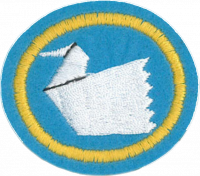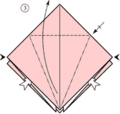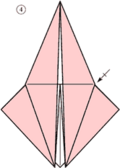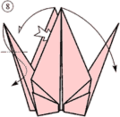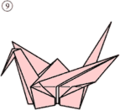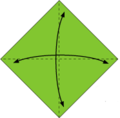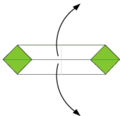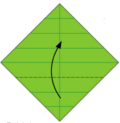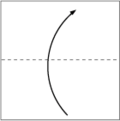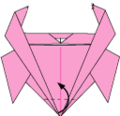Difference between revisions of "AY Honors/Origami/Answer Key/es"
(Created page with "</noinclude> <!-- 1. ¿Qué es el Origami? ¿De dónde proviene? ¿Cómo es utilizado? ¿Cómo se desarrolló? -->") |
(Created page with "{{clear}}") |
||
| Line 81: | Line 81: | ||
<noinclude></noinclude> | <noinclude></noinclude> | ||
| − | + | <noinclude></noinclude> | |
| − | <noinclude | ||
| − | |||
{{CloseReq}} <!-- 2k --> | {{CloseReq}} <!-- 2k --> | ||
{{CloseReq}} <!-- 2 --> | {{CloseReq}} <!-- 2 --> | ||
| Line 92: | Line 90: | ||
</div> | </div> | ||
| − | + | <noinclude></noinclude> | |
| − | <noinclude | ||
| − | |||
{{ansreq|page={{#titleparts:{{PAGENAME}}|2|1}}|num=3a}} <!--T:22--> | {{ansreq|page={{#titleparts:{{PAGENAME}}|2|1}}|num=3a}} <!--T:22--> | ||
| − | <noinclude> | + | <noinclude></noinclude> |
| − | </noinclude | ||
| − | |||
| − | |||
| − | |||
| − | + | {{clear}} | |
| − | |||
| − | |||
| − | |||
| − | |||
| − | |||
| − | + | <noinclude></noinclude> | |
| − | <noinclude | ||
| − | |||
{{CloseReq}} <!-- 3a --> | {{CloseReq}} <!-- 3a --> | ||
{{ansreq|page={{#titleparts:{{PAGENAME}}|2|1}}|num=3b}} <!--T:24--> | {{ansreq|page={{#titleparts:{{PAGENAME}}|2|1}}|num=3b}} <!--T:24--> | ||
| − | <noinclude> | + | <noinclude></noinclude> |
| − | </noinclude | ||
| − | |||
| − | |||
| − | |||
| − | |||
| − | |||
| − | + | <noinclude></noinclude> | |
| − | <noinclude | ||
| − | |||
{{CloseReq}} <!-- 3b --> | {{CloseReq}} <!-- 3b --> | ||
{{ansreq|page={{#titleparts:{{PAGENAME}}|2|1}}|num=3c}} <!--T:25--> | {{ansreq|page={{#titleparts:{{PAGENAME}}|2|1}}|num=3c}} <!--T:25--> | ||
| − | <noinclude> | + | <noinclude></noinclude> |
| − | </noinclude | ||
| − | |||
| − | |||
| − | |||
| − | |||
| − | |||
| − | + | <noinclude></noinclude> | |
| − | <noinclude | ||
| − | |||
{{CloseReq}} <!-- 3c --> | {{CloseReq}} <!-- 3c --> | ||
{{ansreq|page={{#titleparts:{{PAGENAME}}|2|1}}|num=3d}} <!--T:26--> | {{ansreq|page={{#titleparts:{{PAGENAME}}|2|1}}|num=3d}} <!--T:26--> | ||
| − | <noinclude> | + | <noinclude></noinclude> |
| − | </noinclude | ||
| − | |||
| − | |||
| − | + | <noinclude></noinclude> | |
| − | <noinclude | ||
| − | |||
{{CloseReq}} <!-- 3d --> | {{CloseReq}} <!-- 3d --> | ||
{{ansreq|page={{#titleparts:{{PAGENAME}}|2|1}}|num=3e}} <!--T:27--> | {{ansreq|page={{#titleparts:{{PAGENAME}}|2|1}}|num=3e}} <!--T:27--> | ||
| − | <noinclude> | + | <noinclude></noinclude> |
| − | </noinclude | ||
| − | |||
| − | |||
| − | |||
| − | |||
| − | |||
| − | |||
| − | + | <noinclude></noinclude> | |
| − | <noinclude | ||
| − | |||
{{CloseReq}} <!-- 3e --> | {{CloseReq}} <!-- 3e --> | ||
{{ansreq|page={{#titleparts:{{PAGENAME}}|2|1}}|num=3f}} <!--T:28--> | {{ansreq|page={{#titleparts:{{PAGENAME}}|2|1}}|num=3f}} <!--T:28--> | ||
| − | <noinclude> | + | <noinclude></noinclude> |
| − | </noinclude | ||
| − | |||
| − | |||
| − | |||
| − | |||
| − | |||
| − | + | <noinclude></noinclude> | |
| − | <noinclude | ||
| − | |||
{{CloseReq}} <!-- 3f --> | {{CloseReq}} <!-- 3f --> | ||
{{CloseReq}} <!-- 3 --> | {{CloseReq}} <!-- 3 --> | ||
| Line 184: | Line 131: | ||
</div> | </div> | ||
| − | + | <noinclude></noinclude> | |
| − | <noinclude | ||
| − | |||
{{ansreq|page={{#titleparts:{{PAGENAME}}|2|1}}|num=4a}} <!--T:30--> | {{ansreq|page={{#titleparts:{{PAGENAME}}|2|1}}|num=4a}} <!--T:30--> | ||
| − | <noinclude> | + | <noinclude></noinclude> |
| − | </noinclude | ||
| − | |||
| − | |||
| − | + | <noinclude></noinclude> | |
| − | <noinclude | ||
| − | |||
{{CloseReq}} <!-- 4a --> | {{CloseReq}} <!-- 4a --> | ||
{{ansreq|page={{#titleparts:{{PAGENAME}}|2|1}}|num=4b}} <!--T:31--> | {{ansreq|page={{#titleparts:{{PAGENAME}}|2|1}}|num=4b}} <!--T:31--> | ||
| − | <noinclude> | + | <noinclude></noinclude> |
| − | </noinclude | ||
| − | |||
| − | |||
| − | |||
| − | |||
| − | |||
<div lang="en" dir="ltr" class="mw-content-ltr"> | <div lang="en" dir="ltr" class="mw-content-ltr"> | ||
Revision as of 13:16, 3 May 2021
Note: Almost every origami book has basic instructions and a set of folding symbols.
In origami, there is a series of several bases that many models are created with. In general, "base" refers to any folded paper that immediately precedes final folding and shaping of the model-to-be.
- The frog base starts with a waterbomb base or preliminary fold. All four flaps are squash-folded (the result is the same in either case), and then the corners are petal folded upward.
Other Bases
- The kite base is merely two valley folds that bring two adjacent edges of the square together to lie on the square's diagonal.
- The fish base consists of two radial folds against a diagonal reference crease on each of two opposite corners. The flaps that result on the other two corners are carefully folded downwards in the same direction. In other words, it consists of two side-by-side rabbit ears.
If a square is blintz folded, then a kite/fish/bird/frog base is folded, and the blintzed edges teased out and collapsed n a certain fashion, this is called a blintzed kite/fish/bird/frog/base, which doubles the complexity and adds more points and edges to the original kite/fish/bird/frog base, for a more complex model that requires more points. It's possible to double blintz for a double blintzed kite/fish/bird/frog base if needed. Theoretically an infinite number of blintzes could be performed to yield an infinitely complex multipointed base, but paper thickness restricts this to generally two blintzes.
There is also the diamond base, the square base, the boat base, the pig base, the helmet base, the blintz base, and the organ base.😊
Here's a paper rose from WikiHow:
Here are a couple of links to WikiHow for making a jumping frog:
I find the boat the easiest.
| Tip for earning from home during the pandemic | |
| After you fold the models, you can illustrate by sharing with your family. |
- Noah: ark (house on boat?) & bird
- Creation (you choose a variety of animals and make a male and female of each)
- Daniel's Lions
- Jesus' Parable of the lost sheep (you might NOT want to make 100 sheep, so think carefully through implementation). Rocks and bushes are foldable items and might privide a place to "hide" the sheep that the shepherd is finding.
- The four beasts of Daniel 7 (for advanced folders!)
- Zechariah 6:1-4 Horses and chariots. (for intermediant folders)
Other
Found these images, but they are not #5 or #6 above
